‘Spanish Stonehenge’ Revealed By Drought After 50 Years
An ancient marvel has emerged from the depths, unveiling a prehistoric secret hidden beneath the waters for five decades.
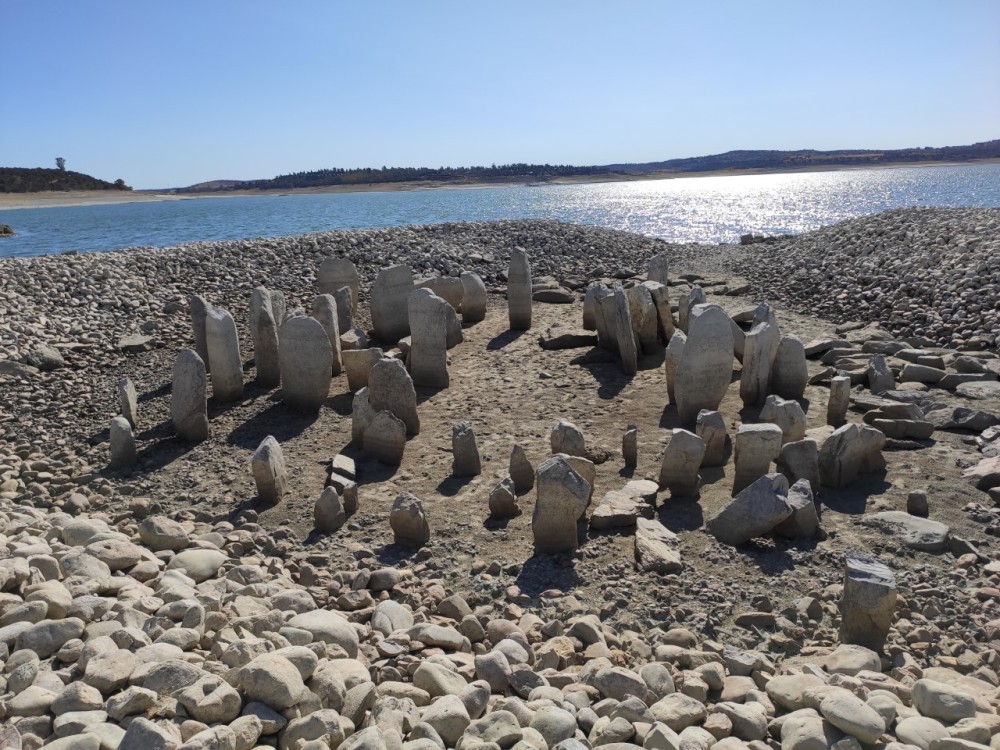
The Dolmen of Guadalperal, often referred to as the Spanish Stonehenge, stands as a testament to the mysteries of antiquity. This circle of numerous megalithic stones, believed to trace its roots back to 5000 BC, recently resurfaced in Spain’s Valdecanas reservoir. The unforeseen consequence of an exceptionally severe drought, causing the water level to plummet to 28% of its capacity, led to the dramatic revelation, as reported by CNN.
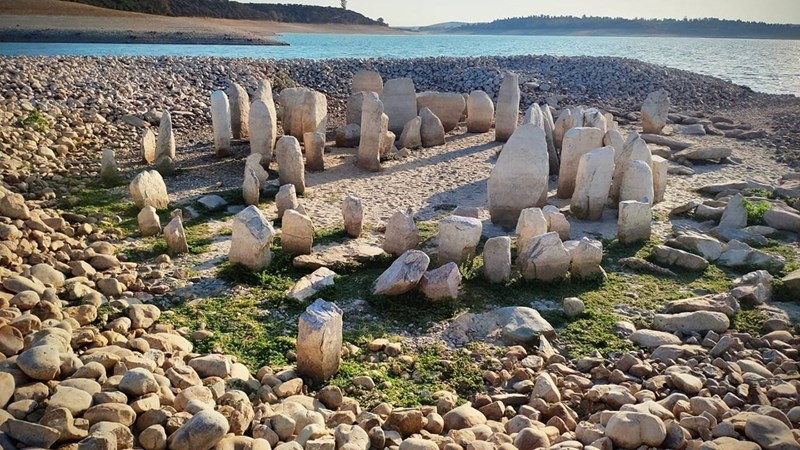
Archaeologist Enrique Cedillo from Madrid’s Complutense University expressed the rarity of this occurrence, stating, “It’s a surprise, it’s a rare opportunity to be able to access it.” He, along with other experts, hurried to examine the structure before the imminent return of autumn rains threatened to submerge it once more.
With an age spanning approximately 7000 years, the Spanish Stonehenge predates its more famous counterpart in England by potentially thousands of years. Discovered by German archaeologist Hugo Obermaier in 1926, the site was submerged in 1963 as part of a rural development project during Francisco Franco’s regime.

The Dolmen of Guadalperal has surfaced fully only four times since then, most recently in 2019 after being concealed for half a century. The expansive circle, featuring around 150 standing stones or megaliths, some exceeding a height of 6 feet (1.8 meters), encircles a central, open oval-shaped space. Speculations surround the possibility that this mysterious structure once supported a massive stone cap, possibly used for ritual purposes.
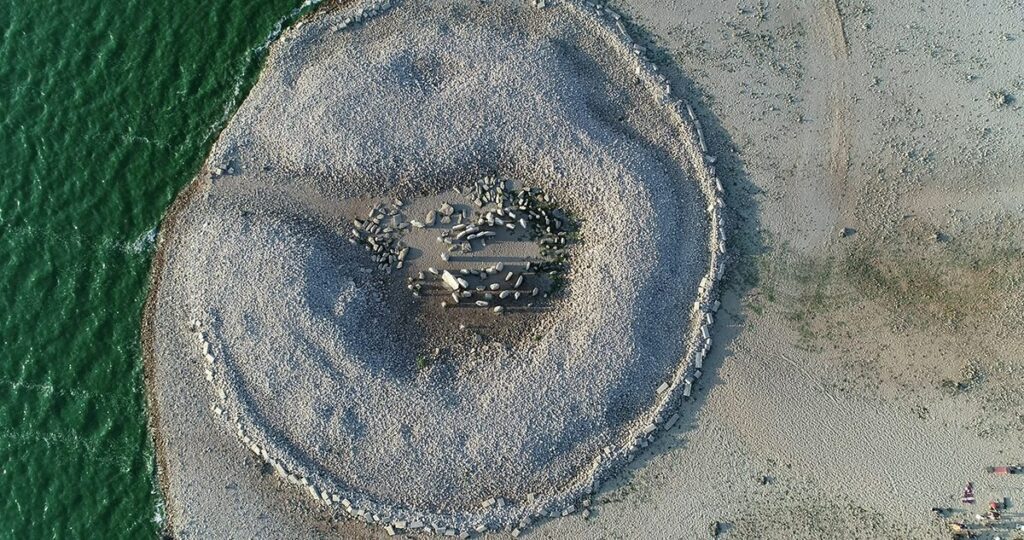
Designed as both a burial site and a sun-worshipping temple, the dolmen’s orientation likely aligned with the summer solstice, allowing sunlight to illuminate the resting place of the community’s ancestors. According to Primitiva Bueno Ramirez, a prehistory specialist at the University of Alcalá, worshippers would traverse a narrow hallway adorned with engravings before entering a spacious main chamber (approximately 16 feet across) where the deceased were presumably interred.
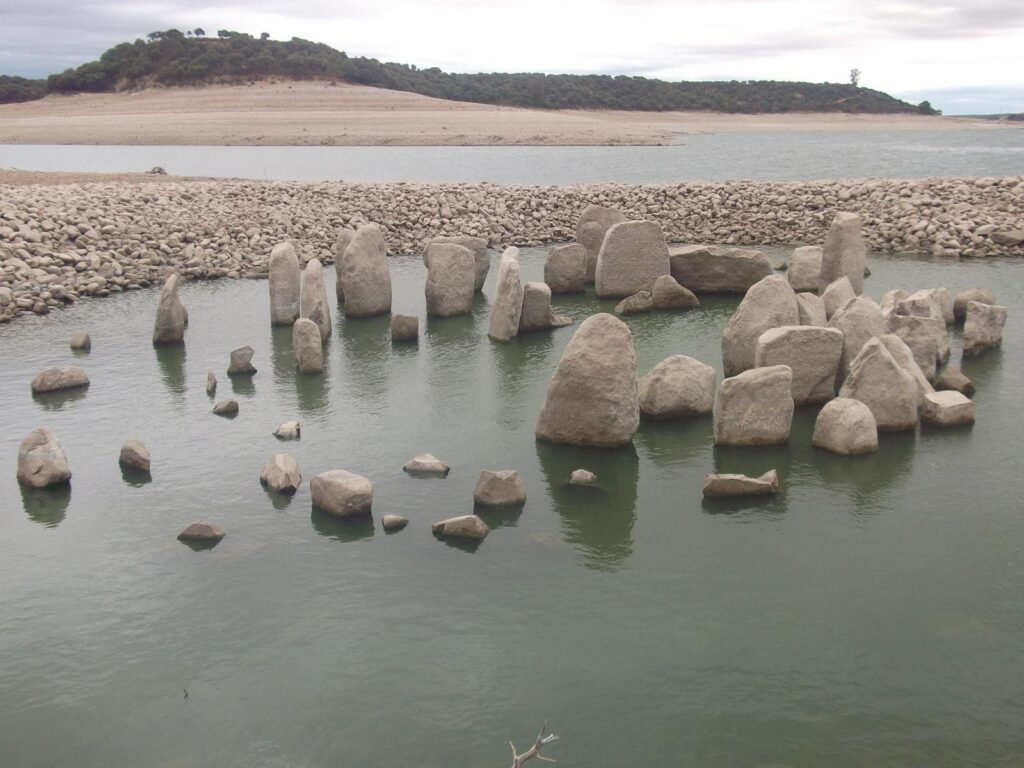
A prominent feature is a large stone, a “menhir,” believed to mark the entrance. This stone threshold bears two engravings: a human figure on one side and a squiggly symbol on the other, possibly depicting a snake or the Tagus River, from where the stones were transported about three miles away. NASA’s Earth Observatory suggests that if indeed a waterway is represented, it could be one of the oldest maps in Europe.
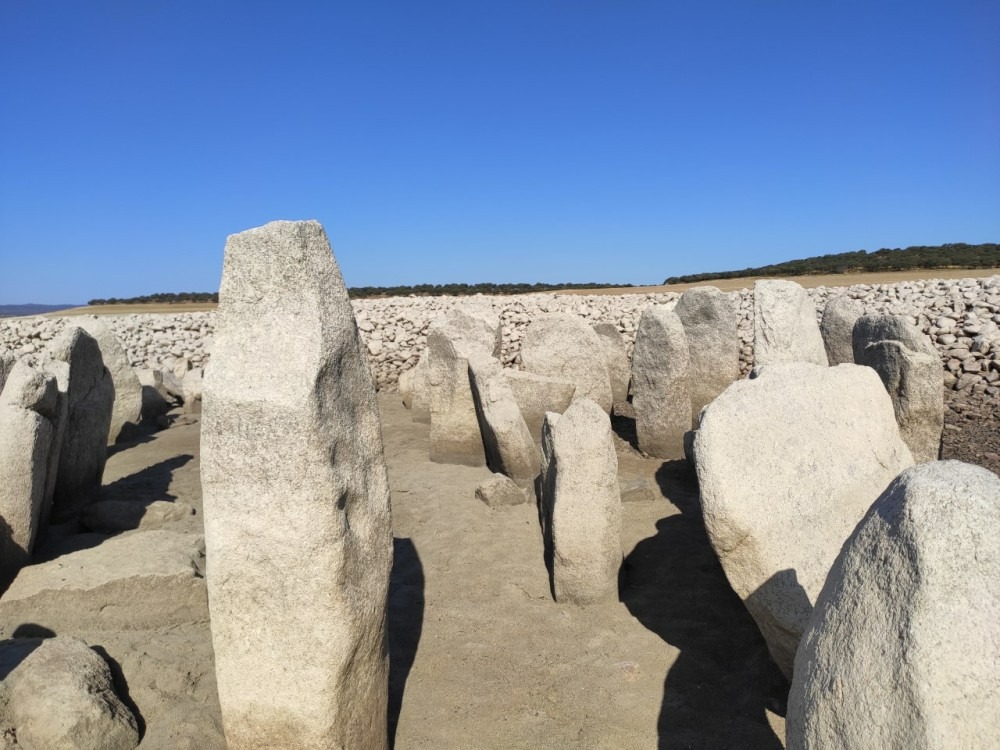
As rain looms and the waters are expected to rise, the stones are likely to be submerged once again. Local groups have advocated for relocating the entire monument to higher ground, enabling in-depth studies and public access. However, concerns among archaeologists persist, fearing that a hasty move could hasten the monument’s decay in a race against impending submersion.
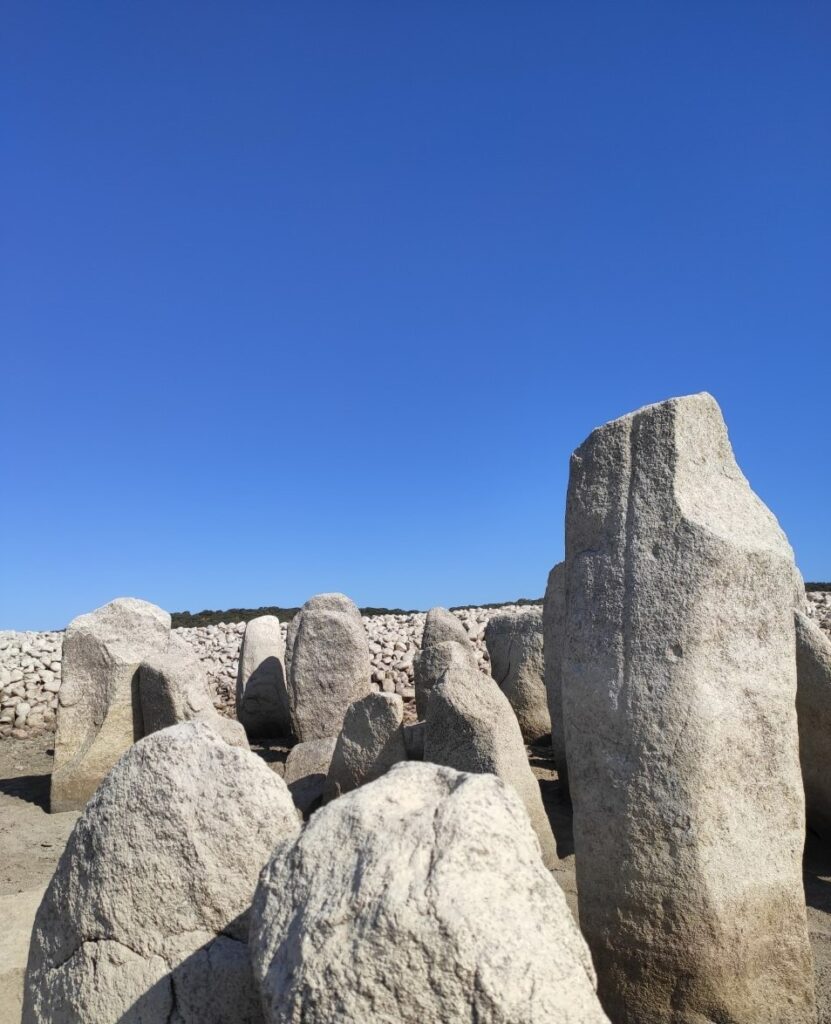
For now, the Dolmen of Guadalperal patiently awaits its next submersion, holding within its ancient stones the echoes of a time long past.
